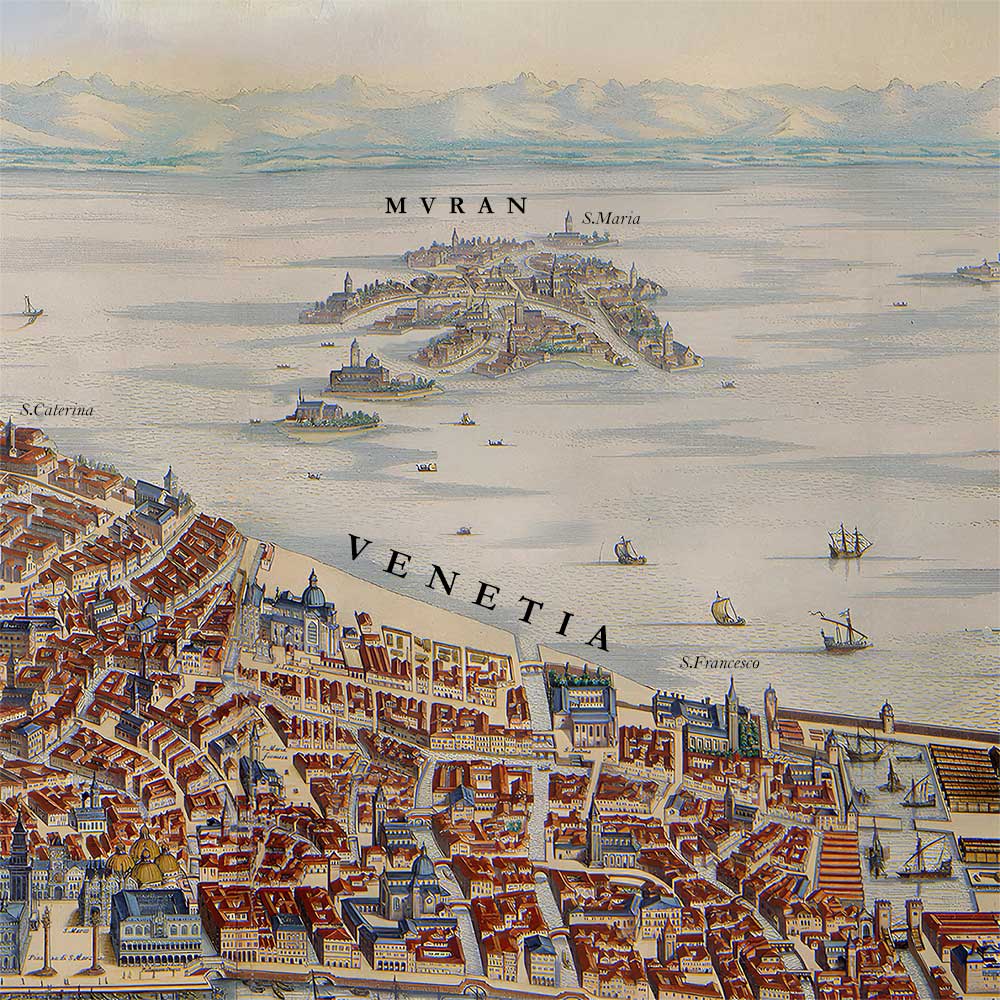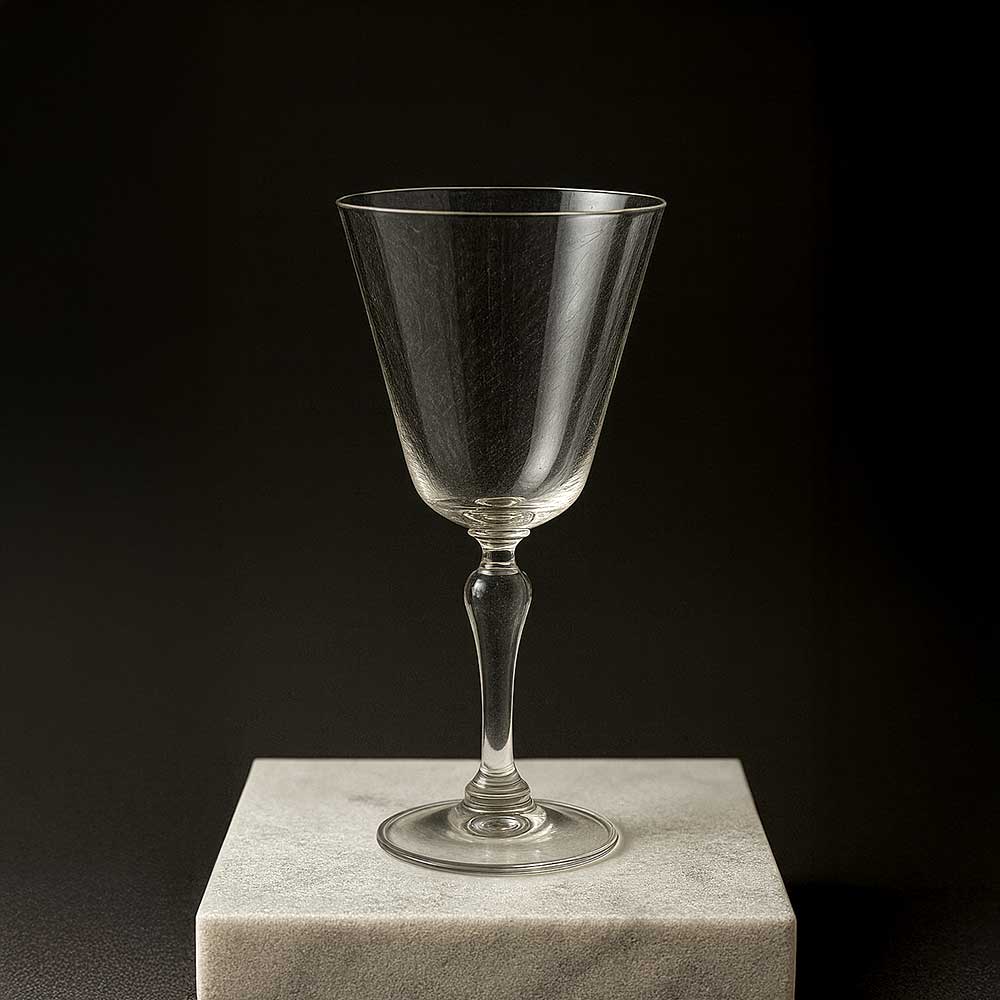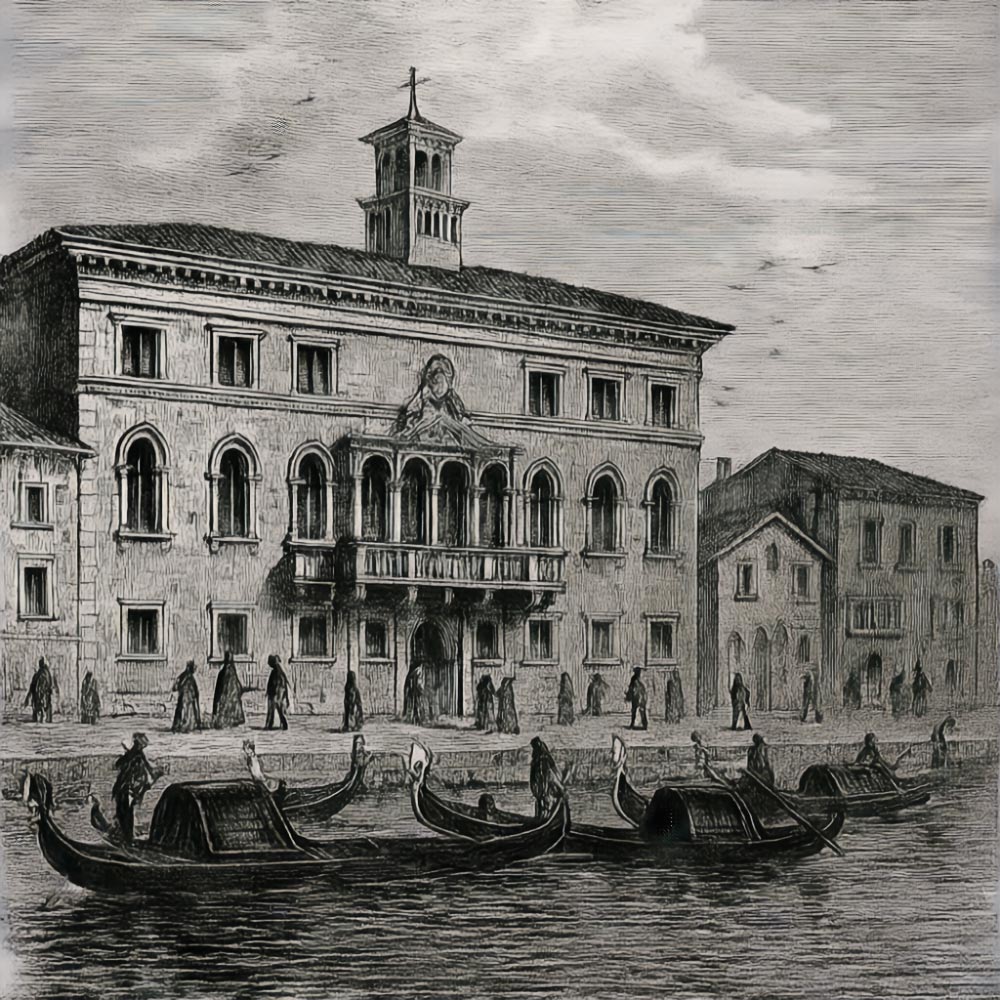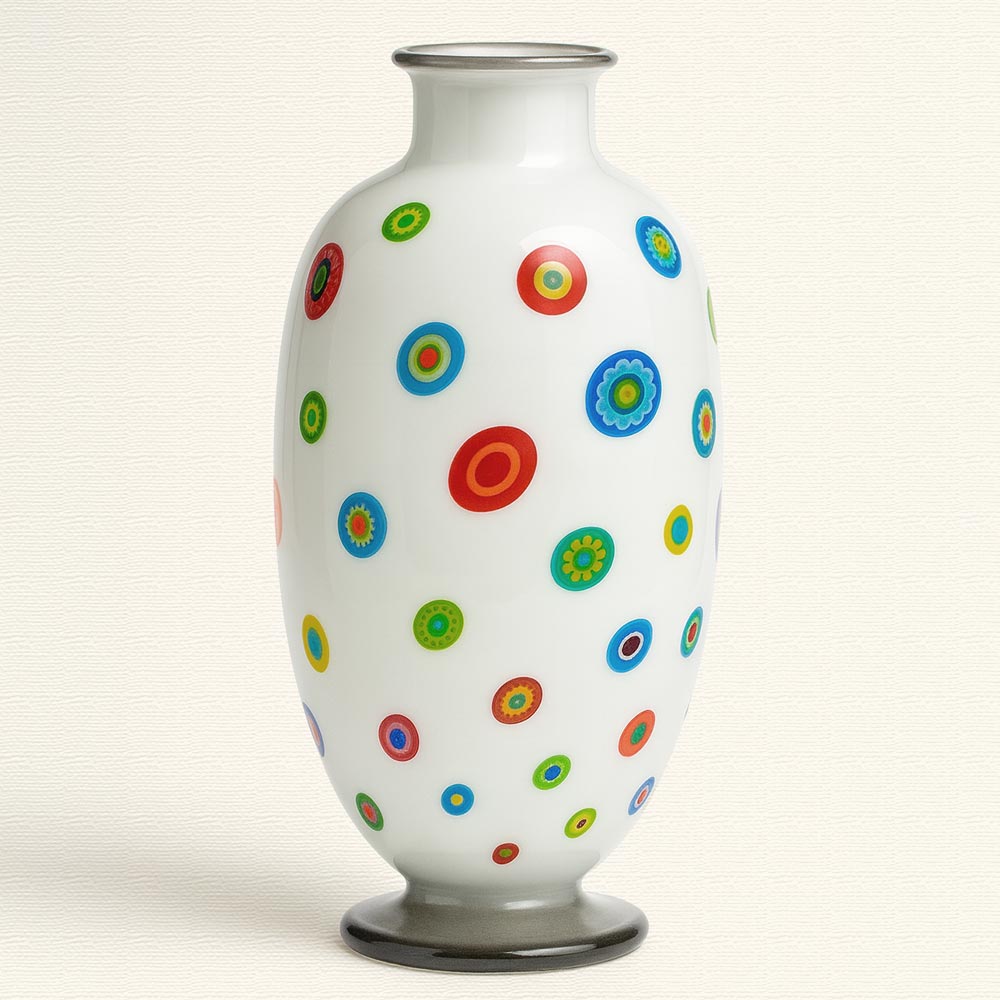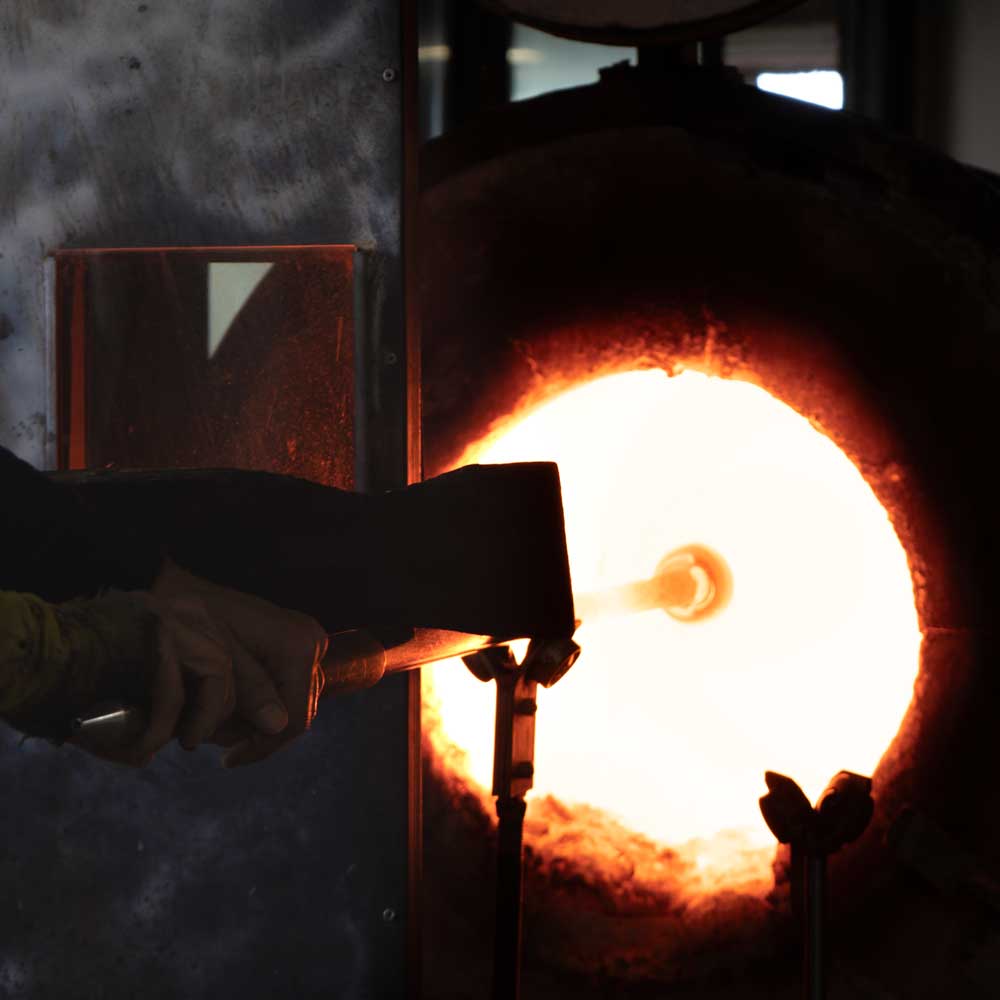The Art of Murano Glass
History & Traditions
/ History
The origins of Murano glass: from Venice to the island of masters, a tradition preserved for centuries.
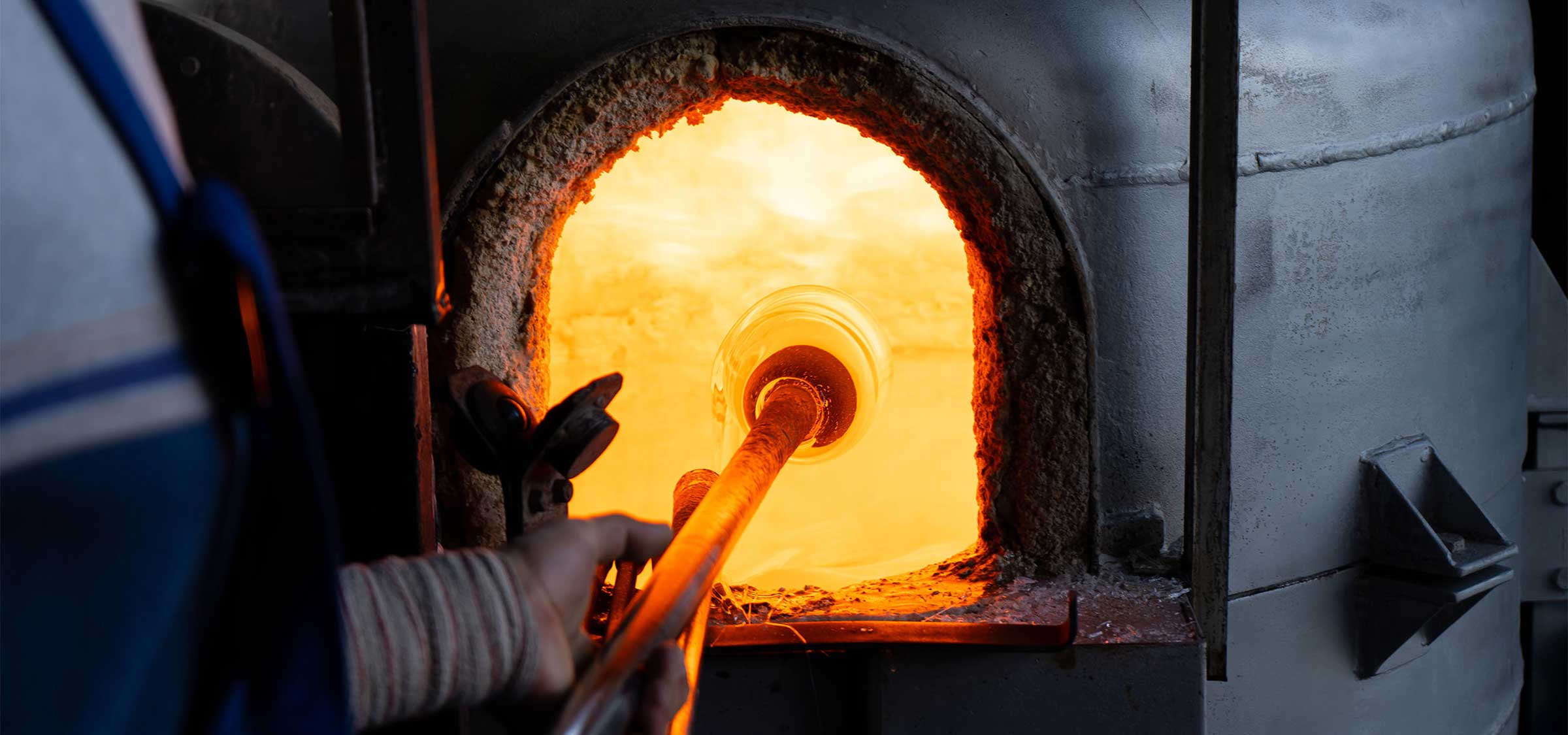
Oven Temperature
Our ovens run 24/7 with a temperature range that varies from 1000° to 1200° Celsius
Arm protection
Our glass masters uses arm protection in order to withstand the heat coming from the oven
External Temperature
The external temperature of the ovens can hit 200° Celsius and high ceiling are needed to work with the heat of the summer
/ Glassblowing Techniques
From layered color to cane work. Murano techniques shaped in fire.
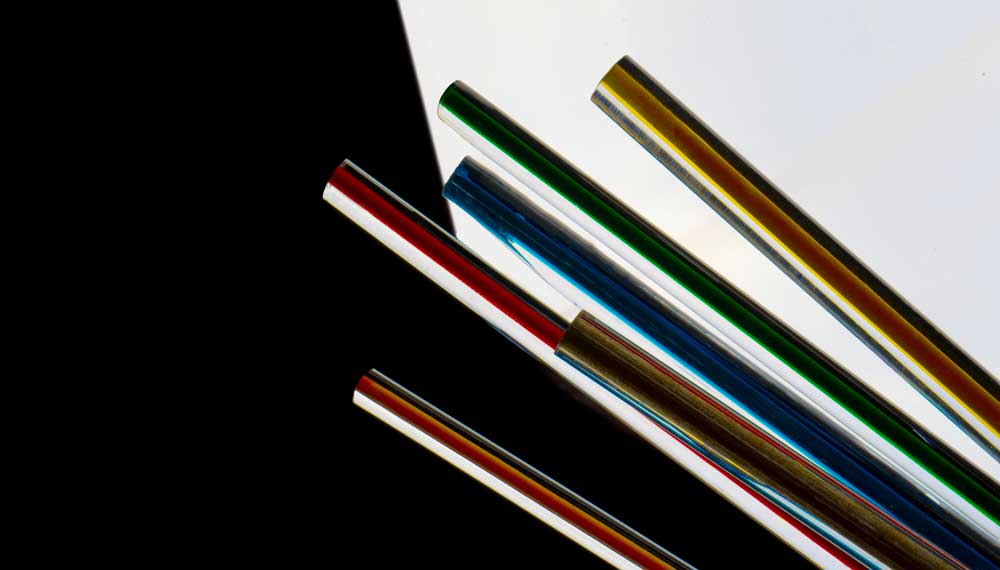
Sommerso
Cased layers (color over clear glass) fused and blown as a single volume. Soft edges, a suspended color effect, and pronounced optical depth. It requires precise control of viscosity and working temperatures.
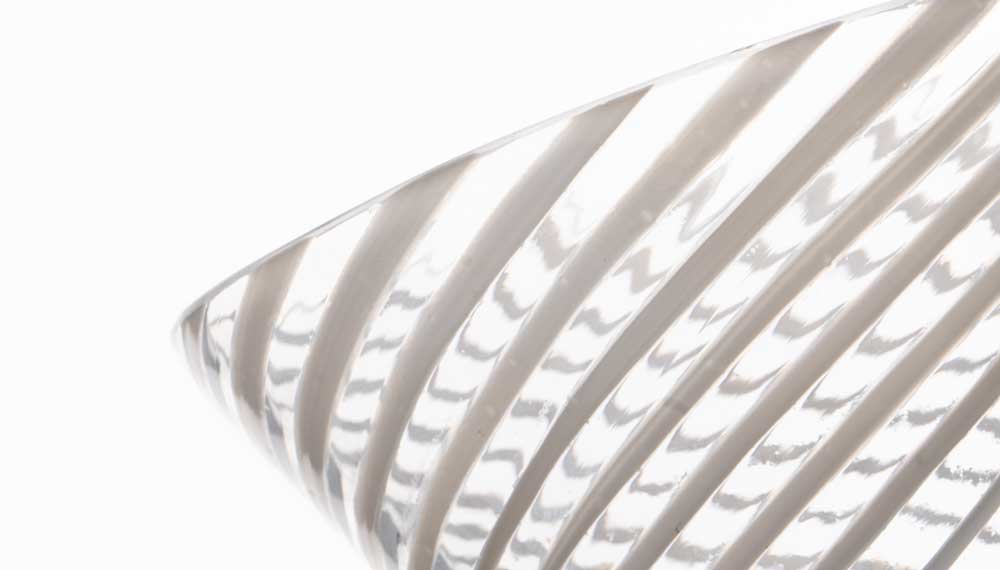
Filigrana
Aligned glass canes fused into a sheet, then rolled up and blown: parallel stripes or diamond reticello with microbubbles. Graphic elegance, steady rhythm, and utmost rotational precision.
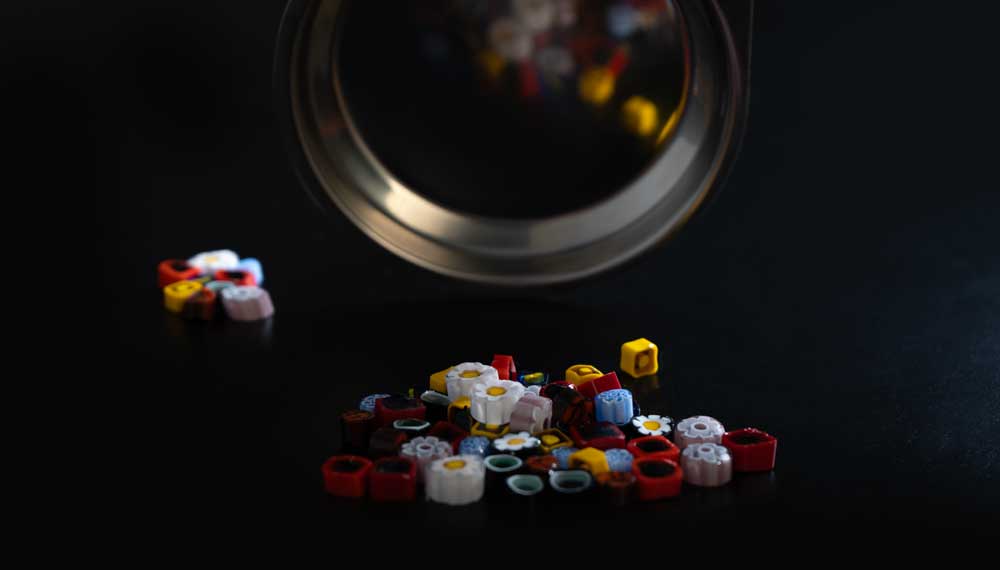
Murrine
Cross-sections of glass canes that contain intricate motifs like flowers, stars, or figurative designs. These sections are then picked up and fused onto the blown piece.
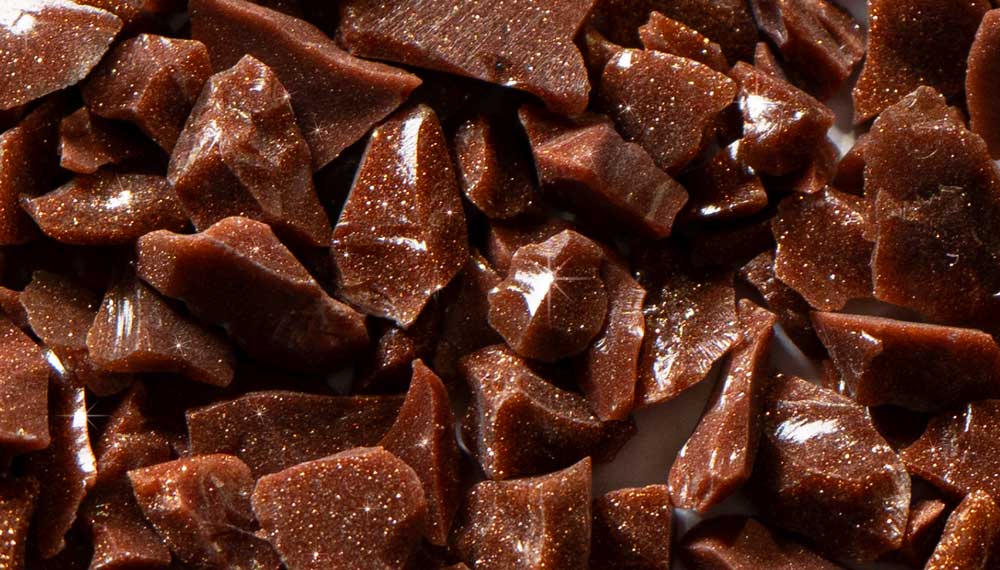
Avventurina
Copper crystals dispersed in the glass create a warm, pinpoint sparkle. Short hot-working and careful annealing preserve its brilliance.
/ Processing of Materials
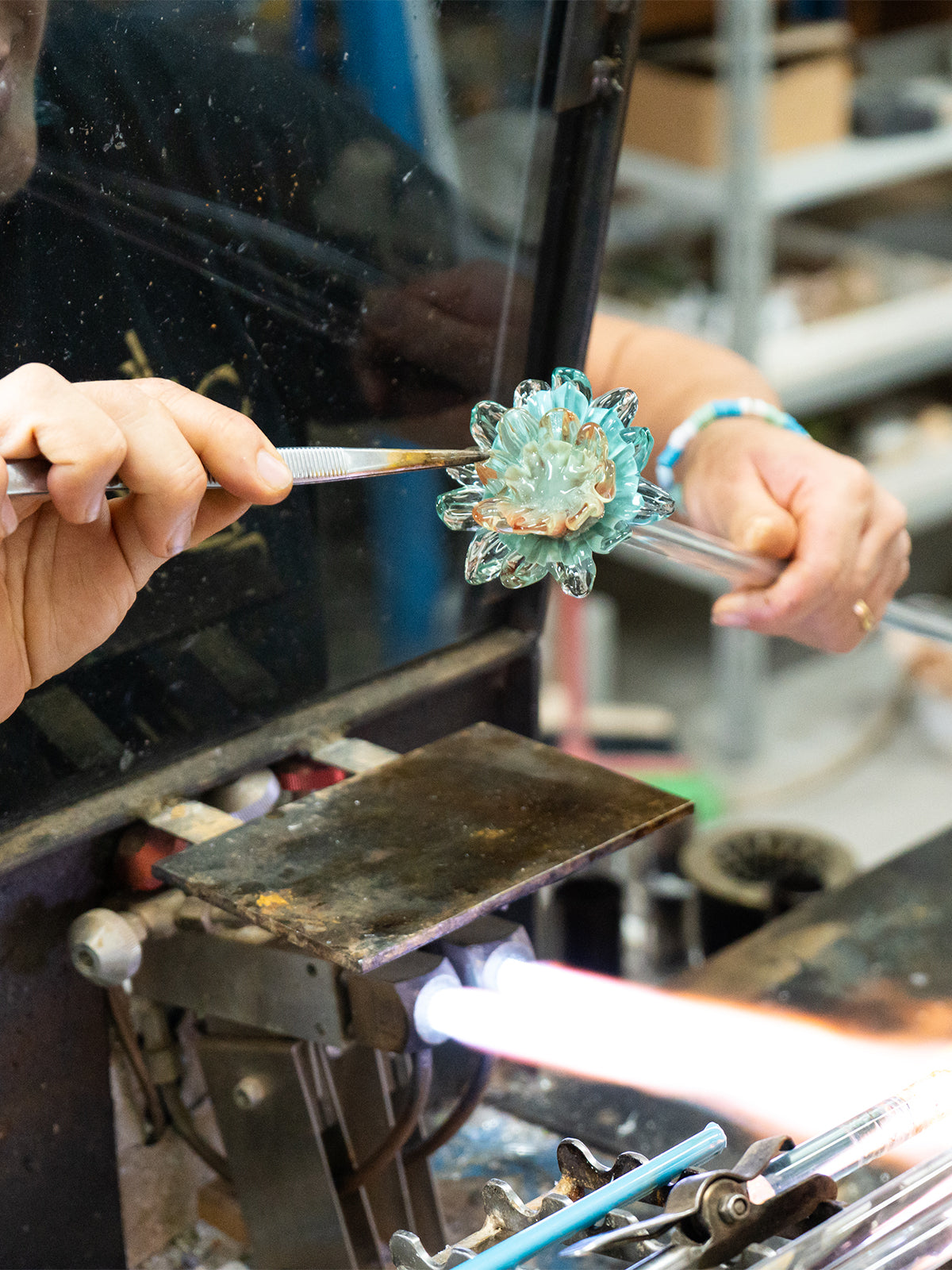
The lampworking process consists of a high-temperature flame infused with oxygen (O2) that helps melt the glass rods. Rods are made in any color and various diameter. The use of small tools and good hands, help brings beautiful objects to life.
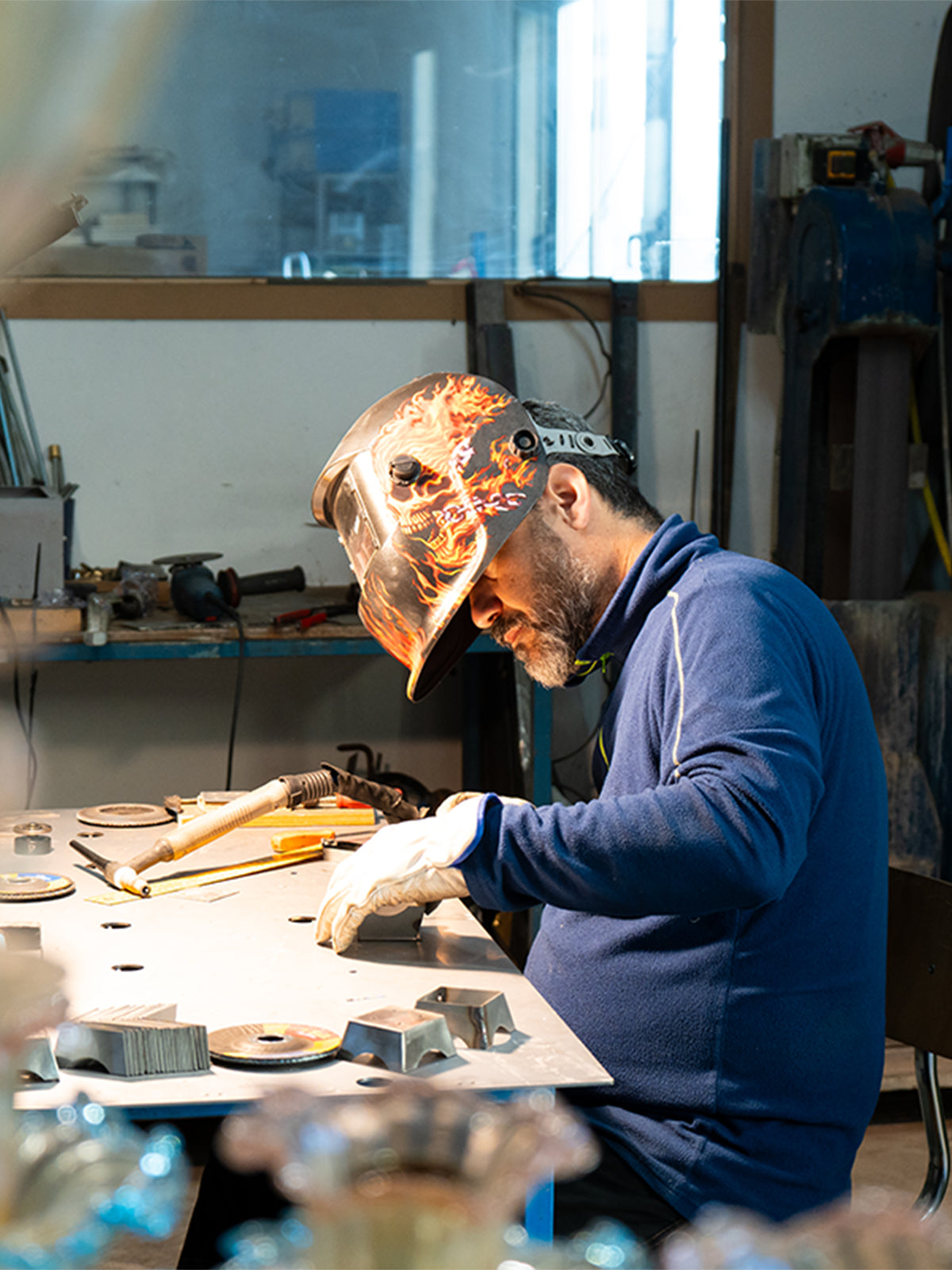
Enchanting the beauty of glass with precious metal is one of our mastership. Skilled workers everyday use the soldering techniques to achieve unique hand-crafted pieces. Usually made of brass or stainless steel, are then galvanized in 24K Gold bath or 999 Silver.
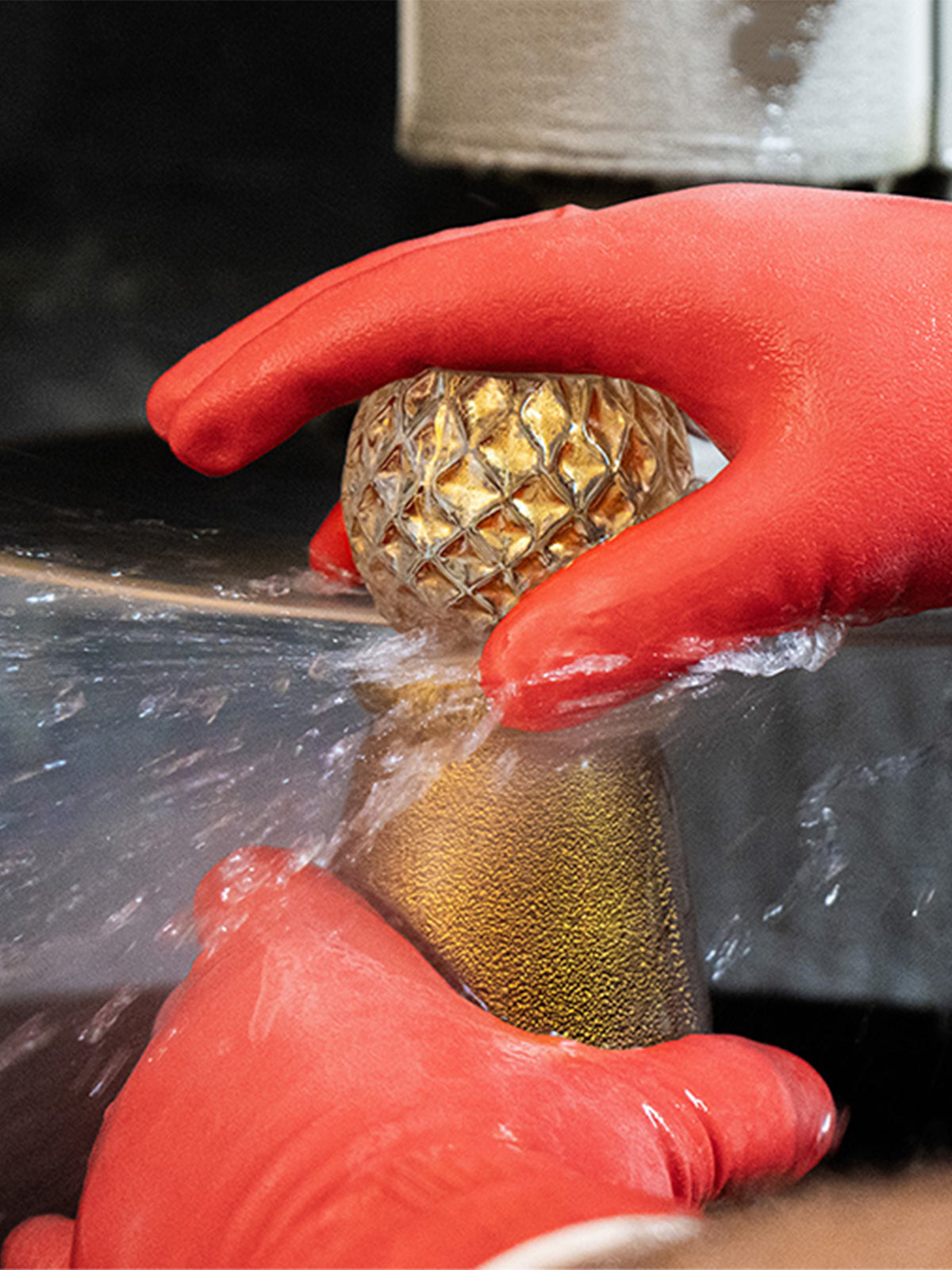
Most of the glass items, when taken out of the temper oven, are then cold-worked with the use of diamond based utensils. The help of water is needed to cool down the high speeds of these tools.
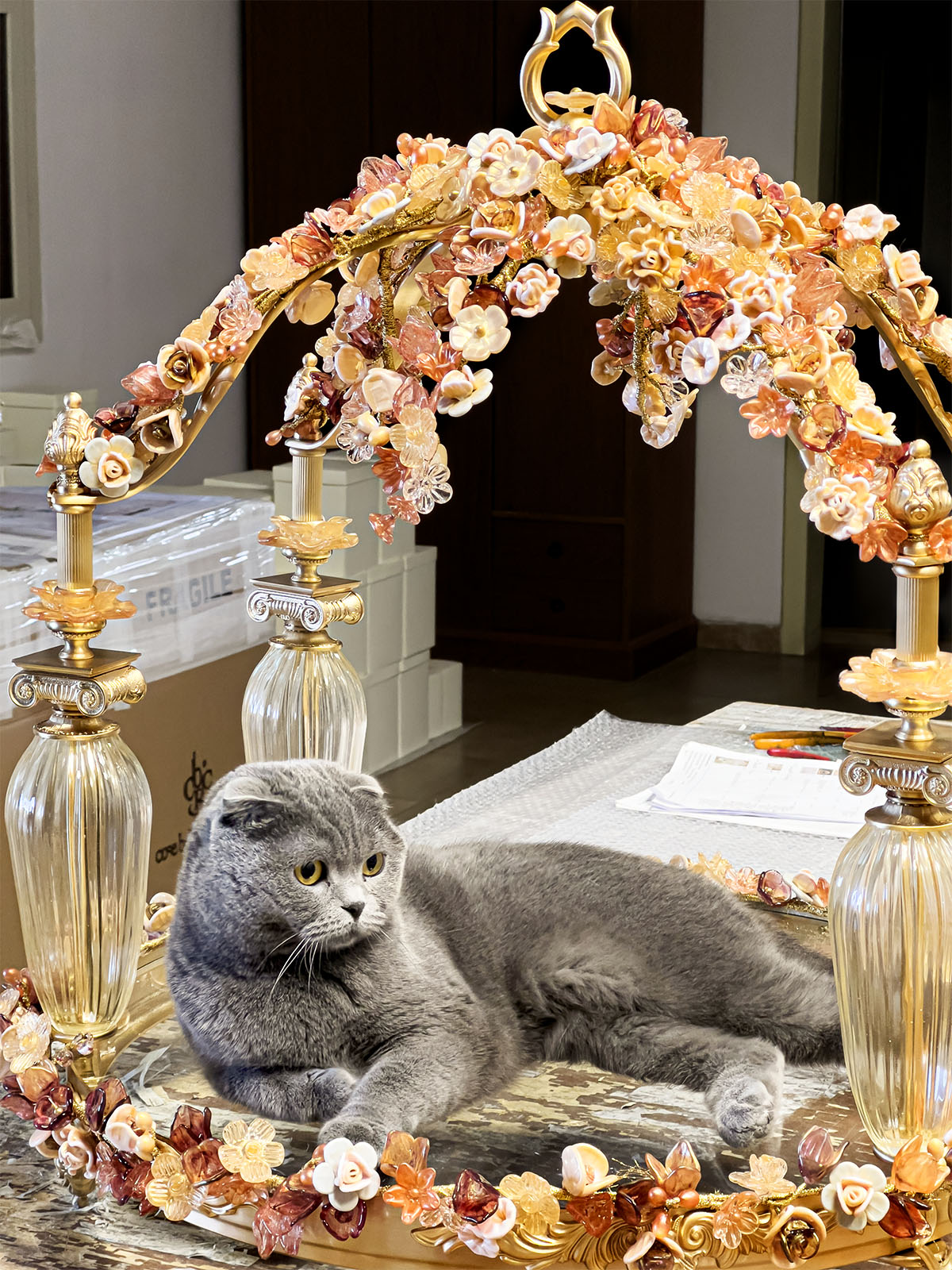
Pet therapy in the workplace brings numerous benefits, including stress reduction, increased employee satisfaction, and enhanced social interactions. Olivia is big part of it, being the company's cat that interact everyday with our workers. We at Cose Belle Cose Rare, believe that animals can create a more relaxed atmosphere, encouraging productivity and creativity.
The lampworking process consists of a high-temperature flame infused with oxygen (O2) that helps melt the glass rods. Rods are made in any color and various diameter. The use of small tools and good hands, help brings beautiful objects to life.
Enchanting the beauty of glass with precious metal is one of our mastership. Skilled workers everyday use the soldering techniques to achieve unique hand-crafted pieces. Usually made of brass or stainless steel, are then galvanized in 24K Gold bath or 999 Silver.
Most of the glass items, when taken out of the temper oven, are then cold-worked with the use of diamond based utensils. The help of water is needed to cool down the high speeds of these tools.
Pet therapy in the workplace brings numerous benefits, including stress reduction, increased employee satisfaction, and enhanced social interactions. Olivia is big part of it, being the company's cat that interact everyday with our workers. We at Cose Belle Cose Rare, believe that animals can create a more relaxed atmosphere, encouraging productivity and creativity.






